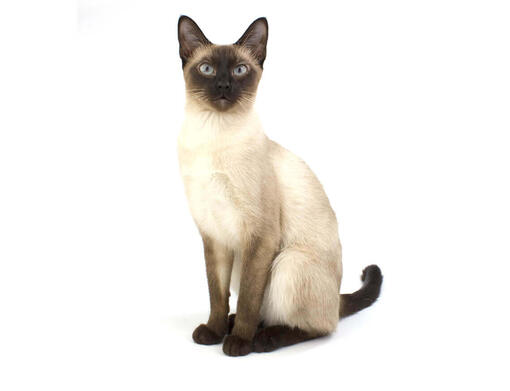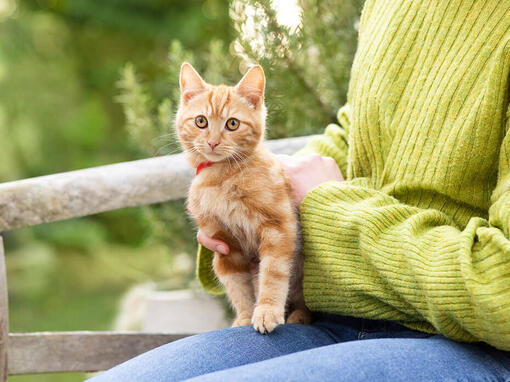- Highly active and inquisitive cat
- Sociable and dependent cat
- Very talkative cat
- Lean and elegant cat breed
- Requires grooming once a week
- Non hypoallergenic breed
- Needs some out-door space
- May require familiarisation before living with children
Personality
The Siamese cat is probably as well known for its loud vocal personality as for its classic looks. The breed is usually outgoing, extrovert and can be extremely noisy. Siamese cats demand attention and to be part of the family. This is not an ideal cat for someone out at work all day as they do not like to be left on their own - two litter mate Siamese may be the answer! Siamese cats are highly intelligent and need to be kept amused. Toys and scratching posts should be provided for their amusement and they can be taught to retrieve toys.
History and Origins
Country of Origin: Thailand (formerly Siam)
The Siamese cat is one of the most popular breeds of pedigree cat in the UK – second only to British Shorthairs in number. It is possibly one of the most easily recognisable. The Siamese cat originated in what is now Thailand and has been in existence for hundreds of years. Legend says that Siamese cats were sacred and guarded Buddhist temples. Siamese cats were imported into Britain in the 1880s. The original Siamese cat breed colour was the classic seal brown points with a warm cream coloured body but breeders in the west developed more colours by introducing other breeds of cat into the breeding schedule. The original Siamese cat had eye squints and tail kinks which are now considered serious faults.
Siamese cats are a long-lived breed with reports of some living into their twenties. There are, however, a number of conditions that are linked to the breed. Some lines may be predisposed to some cancers such as lymphoma and some intestinal tumours. Siamese cats do also seem to suffer more from chronic coughing (bronchial disease) and to vomit more than other breeds. Some lines of Siamese cat will ingest strange non-edibile items (this is known as pica) such as eating woolen garments, plastic and other materials – the reason for this is not understood.
Every cat is unique and each has their own particular likes, dislikes, and needs when it comes to food. However, cats are carnivores and every cat must obtain 41 different and specific nutrients from their food. The proportion of these nutrients will vary depending on age, lifestyle and overall health, so it's not surprising that a growing, energetic kitten needs a different balance of nutrients in her diet than a less active senior cat. Other considerations to bear in mind are feeding the right quantity of food to maintain 'ideal body condition' in accordance with feeding guidelines and catering to individual preference regarding wet or dry food recipes.
The Siamese cat's short glossy coat does not require excessive grooming but the cat will enjoy the attention gained from being groomed. As with most shorthair breeds, the cats look after their coats very well. As with all breeds, Siamese cats benefit from protection against disease through vaccination and need regular parasite control and annual veterinary health checks.
While this breed is not widely recognised as one of the best breeds for children, all cats are different and with the proper familiarisation may still be able to live with children.










